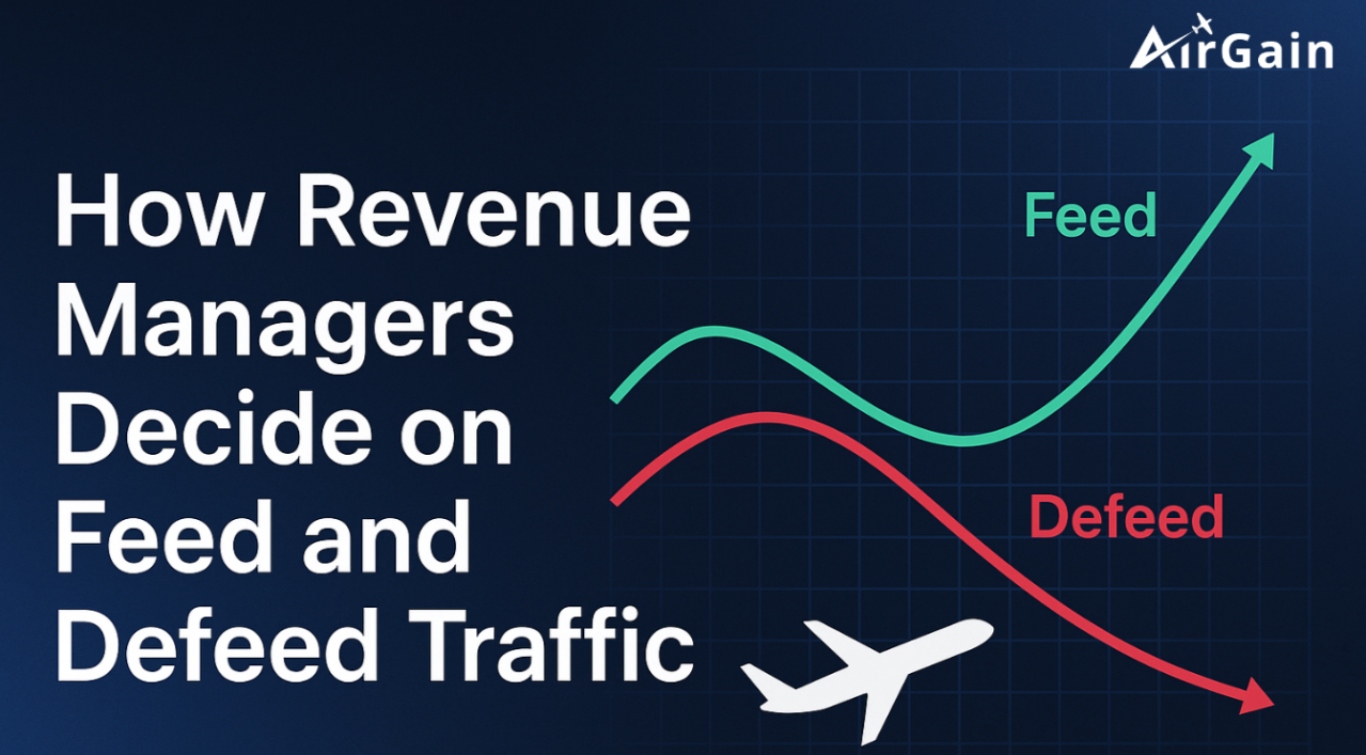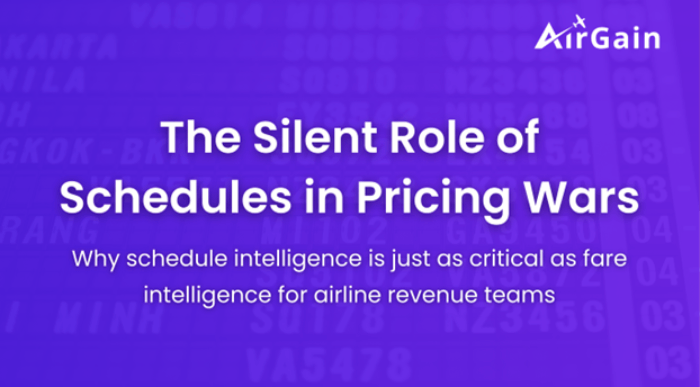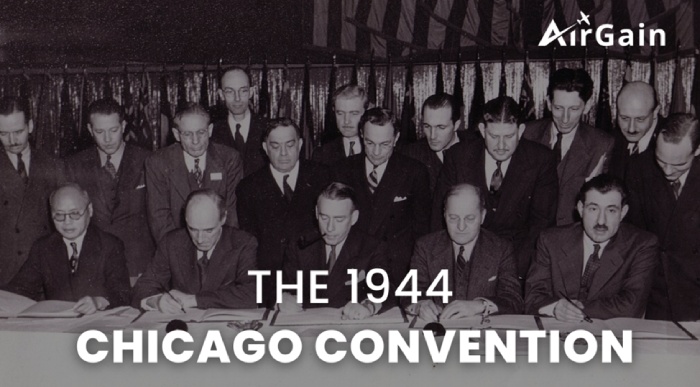11 Jul

The hidden economics of feed and defeed: How modern airline revenue managers drive marginal network gains
Not just about route-level margins — it’s about marginal network contribution
Here’s the thing: decisions around feed and defeed almost never hinge on isolated P&Ls for individual legs. Mature airline RM teams (and especially integrated with network planning) focus on marginal revenue contribution (MRC) across the network.
For instance, increasing short-haul feeder capacity from a secondary city might be negative on a standalone sector RASK-CASK basis, but could deliver outsized incremental flows to long-haul premium cabins that yield 3–5x higher contribution margins. You’re essentially solving for:
ΔNet = ΔIncremental long-haul revenue + ΔIncremental connecting costs – ΔIncremental short-haul operating costs
This is why any serious feed/defeed discussion involves network flow models (often built in NetLine, Sabre GPN, or custom Python setups) that can simulate how tweaking spoke capacity changes demand spill, recapture, and dilution across O&D pairs.
Capacity discipline vs. defensive feeding: managing game theory
In intensely competitive markets, defeeding sometimes has less to do with intrinsic demand and more to do with game theory. Airlines with strong balance sheets may maintain higher feed to:
- Preempt competitive entry by signaling commitment to volume (even at thinner yields temporarily).
- Protect FFP share in high-value regions, knowing defeeding could trigger corporate defection.
On the flip side, disciplined carriers might pull capacity, accepting temporary share losses to reset price elasticity curves and reduce market CPM volatility. They’ll then track booking curves to re-enter selectively when competitor load factors force up their fares.
What this really means is defeeding decisions often rely on multi-period optimization, not just static snapshot forecasts. Revenue managers frequently build scenarios in tools like MIDT flow overlays combined with proprietary willingness-to-pay elasticity matrices to understand long-tail spill risk.
Ancillaries and the new feed calculus
Classic feed logic was heavily seat-centric. But with the ancillary and merchandising revolution, airlines now factor in:
- Branded fare upsell take rates
- Pre-seating, bag revenue, dynamic bundles
- Even onboard buy rates by segment
So a short regional sector that looks marginal on fare-only metrics might still justify feeding if it consistently drives high attach rates on ancillaries, or brings in higher basket-size corporate travel. Many advanced RMs now run Total Customer Revenue per Passenger (TCR/PAX) models, blending fare + ancillary + loyalty breakage contributions to decide whether to prune or protect segments.
Operational overlays: slot, fleet and schedule banks
No feed/defeed strategy is purely commercial. Revenue managers have to collaborate tightly with scheduling and operations because:
- Slot usage requirements: Certain airports force carriers to maintain utilization or risk losing valuable slot pairs. So defeeding might be operationally infeasible, leading instead to tactical fare dilution (or using wet lease capacity) to meet slot rules.
- Fleet assignment constraints: New-gen aircraft with better CASM might change the economics of thinly fed routes. Conversely, older sub-fleets might be cycled out, forcing natural defeeding irrespective of demand.
- Hub bank integrity: You can’t just pull a feeder without impacting MCT windows for banked long-hauls. Advanced network tools model passenger misconnect risk and buffer compliance to see if defeeding a spoke will damage critical hub banks.
The grey area: feed protection vs. strategic pruning
Most airlines don’t run a binary feed/defeed switch. Instead, they:
- Taper frequencies: Dropping a daily to 4x weekly, protecting peak day flows.
- Shift gauge: Moving from a 737 to E190 to protect frequency integrity while lowering seat risk.
- Seasonal shaping: Maintaining high season feed, but pulling down during low-yield shoulder months.
The real art is in dynamic re-optimization — adjusting these levers on rolling 60-90 day forecasts as booking curves reveal actual pace vs. forecast. Advanced RMs blend this with near-real-time competitor pricing intelligence (ATPCO/route intelligence feeds) to preemptive re-file or tweak DCP rules.
So why defeeding is often harder than feeding
Feeding is easy to justify in growth environments. Defeeding requires far more political capital internally because:
- It can impact union crew guarantees or base utilization.
- It often means acknowledging previous overestimations of demand.
- There’s always fear of ceding strategic turf to competitors.
That’s why best-in-class airlines use iterative scenario stress testing — e.g. Monte Carlo models simulating demand shocks, competitor re-entry, or FX swings — to build a defensible case for pruning.
Bottom line
For most outsiders, feed and defeed looks like simple capacity planning. But inside RM, it’s a high-stakes balancing act of multi-dimensional trade-offs: marginal network profitability, competitive deterrence, loyalty ecosystem protection, fleet constraints, and long-term strategic positioning.
If you’re not layering all of these into your feed/defeed models — you’re probably leaving money on the table, or worse, setting up future share erosion.
Try VUE Free for 7 days – The AI-Powered Competitive Rate Intelligence Solution from AirGain




